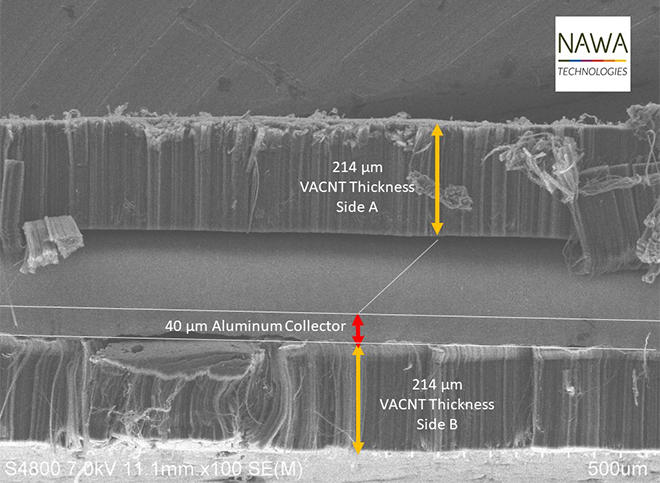Energy storage system manufacturer NAWA Technologies has begun manufacturing its Vertically Aligned Carbon Nanotube (VACNT) material. NAWA’s process grows VACNT simultaneously and homogeneously on both sides of a substrate at atmospheric pressure, using a chemical vapor deposition (APCVD) process, in a roll-to-roll manner.
The process has demonstrated the ability to grow up to over 200-micrometer-long VACNT simultaneously on both sides of a 30 cm-wide aluminum foil, and to selectively grow VACNT on the foil—a feature that’s essential for certain electrode designs and for production efficiency.
“We have entered the first exciting industrialization phase, and are on track to rapidly scale up, with mass production set to begin in 2022,” said NAWA Technologies CEO Ulrik Grape. “The potential for our VACNT innovation is massive in energy storage—from bringing about a quantum leap in the performance of electrodes in any battery system, to our next-gen ultracapacitors—and also in reinforced composites. What’s more, we are bringing this unique material to market in an environmentally friendly manner.”
According to the company, this development process is the start of a scale-up in terms of foil width and roll-to-roll productivity. The specific design of this manufacturing system makes it compact compared to conventional coating equipment, resulting in a smaller footprint in a factory environment, while the highly-efficient process means that the production cost of NAWA’s VACNT material may achieve parity with that of a current electrode at future mass production levels.
Source: NAWA Technologies



















































